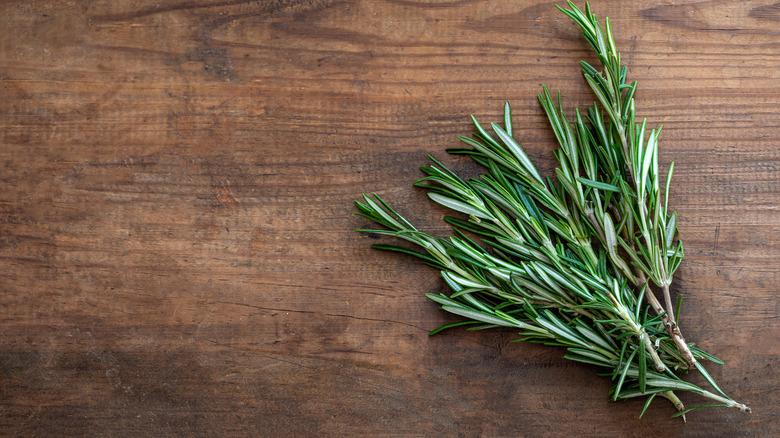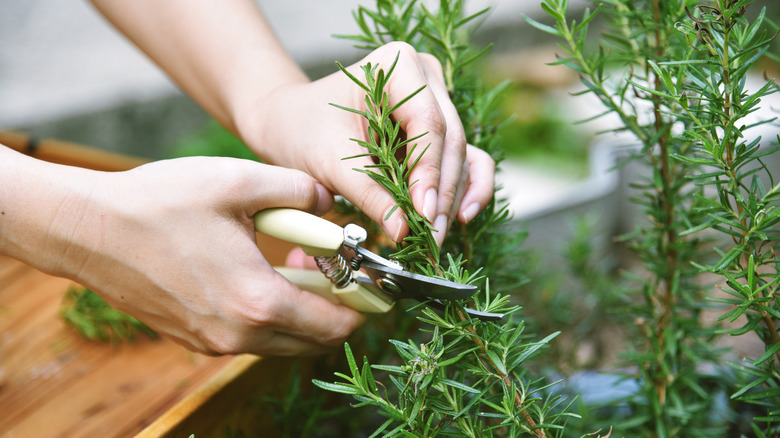Keep Your Rosemary Plants Thriving With A Simple Maintenance Tip
When it comes to crafting a French-style bouquet garni for soups and stocks or a steak infused with fragrant, earthy flavors, rosemary is a non-negotiable. For green-thumbs who've cracked the code that fresh herbs are a breeze to grow at home, there's one un-skippable step to ensure your homegrown rosemary plant thrives: pruning. To find out why this simple method is essential for healthy rosemary, Food Republic spoke with Michael Clarke, founder of Yardwork.
Pruning is the common practice of selectively removing certain parts of the plant to improve its health and productivity. The best time to prune rosemary is after flowering is complete, which is late spring to early summer. "...when you trim the tips, hormones redistribute, activating dormant side buds, with multiple new shoots emerging below each cut," Clarke told us. Alongside providing you with a healthier, more bountiful rosemary plant, consistent pruning also improves the taste of your harvest, too. "Newer growth contains higher essential oil concentration," Clarke added. These aromatic essential oils are directly responsible for the flavor intensity of the rosemary, so a little pruning can add heaps of pine-y, evergreen notes to your dishes.
Rosemary "... naturally grows leggy, sparse, and brittle, if left untouched," Clarke explained. A young rosemary bush should be pruned monthly to ensure full, bushy growth. "... it's best to cut two to three inches of soft, green growth, never cutting down into the hardwood," said Clarke. This is because over-cutting where there are no leaves present may prevent new shoot growth.
Signs of an unhealthy rosemary plant
Rosemary is a plant assassin-friendly shrub, and plenty of sun, pruning, and well-drained soil is the only maintenance it really requires — but don't assume it's immune to decline. According to Clarke, "The best way to tell if rosemary is in decline is to test how strong it smells when cut. Healthy rosemary is powerfully aromatic, while a weak scent on fresh leaves means it has low vigor and is stressed," he told us.
One of the main culprits of stress is under watering. "Stress from under watering will be displayed in drooping tips, while yellowing foliage from the base upward, reveals that rosemary is being overwatered," Clarke explained. "Brittle stems are a result of chronic dehydration and sparse, stretched stems, reveal that the plant is not getting enough sun." Giving your rosemary plants enough water is tricky, as they are incredibly drought-resistant and require minimal watering. For a good balance, make sure the top inch or two of soil are dry between waterings. You should also use a soil with good drainage, which will allow water to pass through without getting waterlogged and causing root-rot.
Another factor behind unhealthy rosemary plants is poor fertilization. "Stunted new growth and very pale new leaves are a clue that the soil conditions are not ideal and fertilization is necessary," Clarke told us. The best time to fertilize for optimal growth is early spring, and for rosemary you should be on the lookout for a balanced, low-nitrogen fertilizer. If you're in a pinch and want to cut down on kitchen waste, discarded eggshells double as excellent fertilizers, too!


